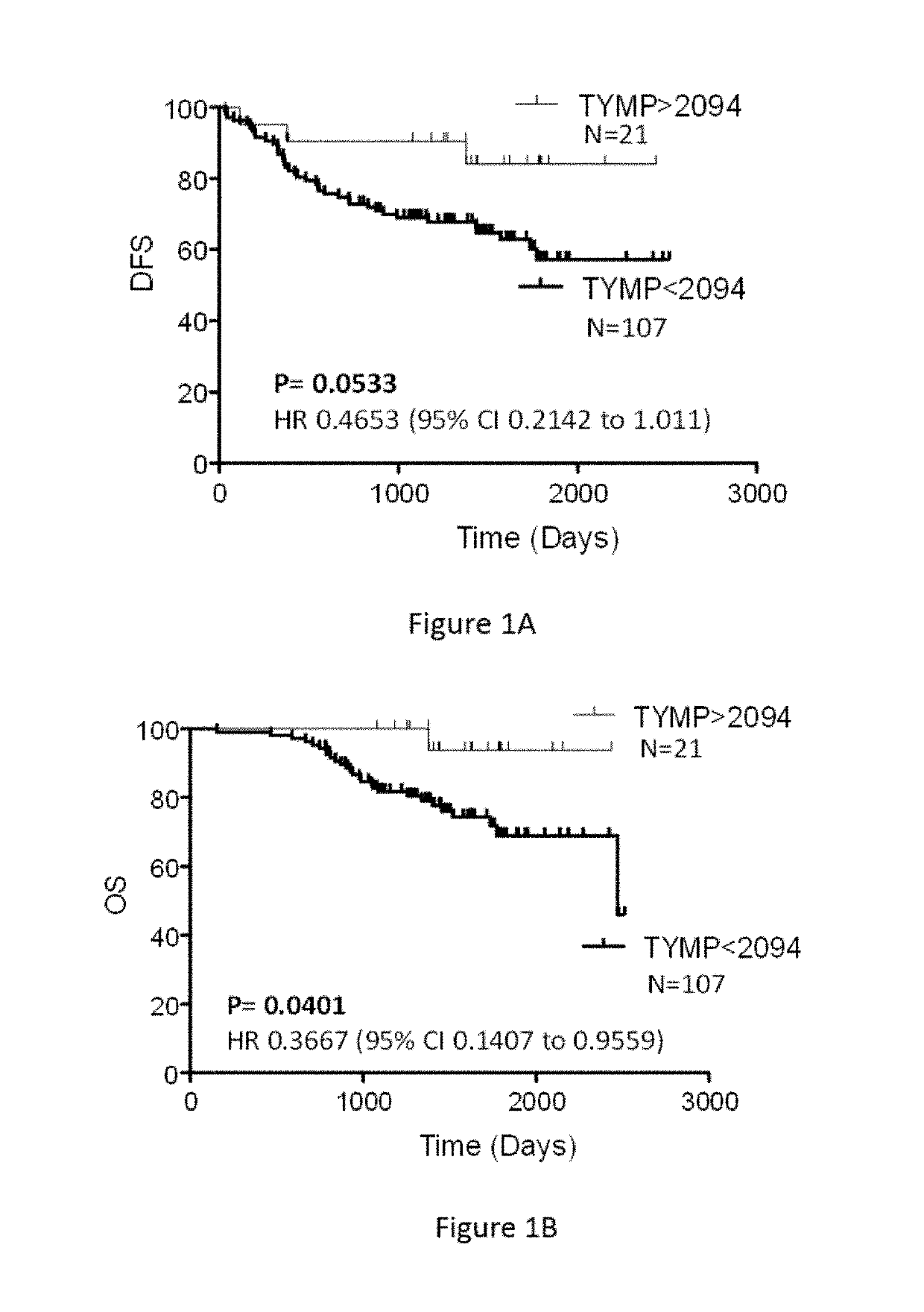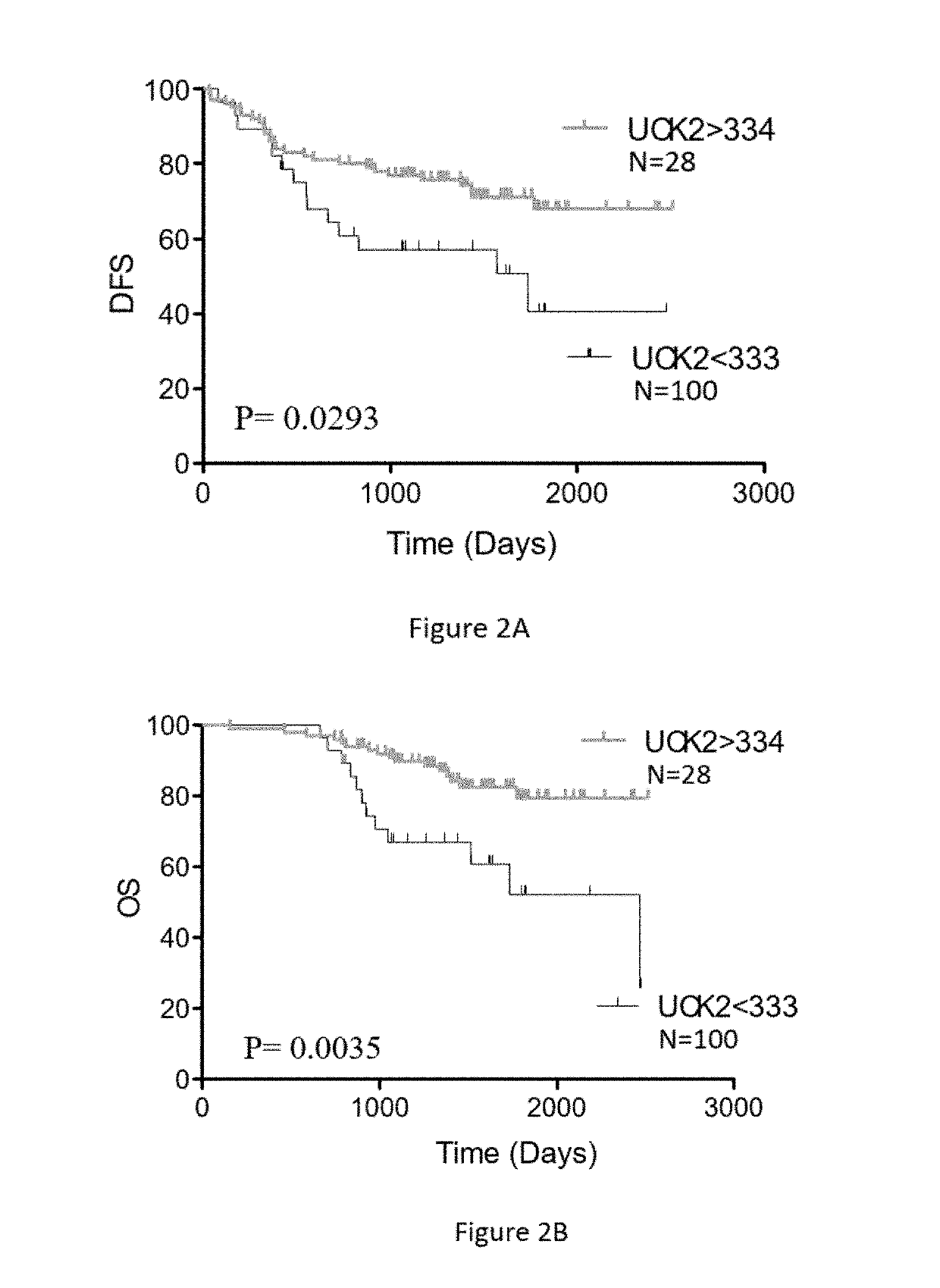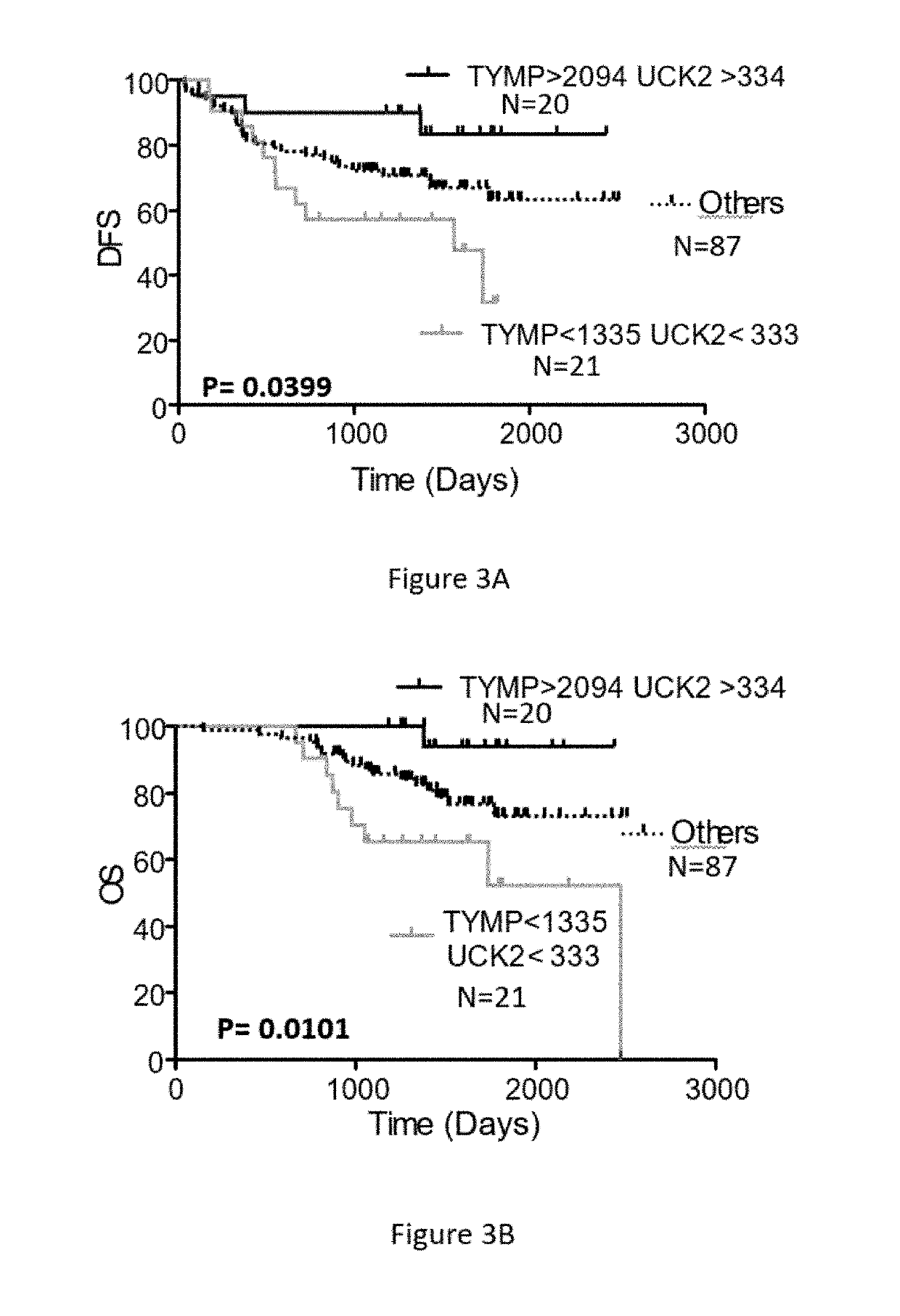Predicting Optimal Chemotherapy For CRC
a chemotherapy and crc technology, applied in the field of cancer treatment, can solve the problems of rapid dividing cancerous cells and cell death of rapidly dividing cancerous cells, and achieve the effect of predicting optimal chemotherapy for cr
- Summary
- Abstract
- Description
- Claims
- Application Information
AI Technical Summary
Benefits of technology
Problems solved by technology
Method used
Image
Examples
example 1
[0030]TYMP was assessed by determining the association between its protein levels and Disease-Free Survival (DFS) and Overall Survival (OS) in a univariate Cox model for treatment with the FOLFOX (5-fluorouracil, leucovorin, and oxaliplatin) regimen. Performing data analysis using the continuous TYMP data a cutoff threshold was derived for dichotomizing patients by TYMP levels using Cox proportional modeling. Kaplan Meier curves of the dataset stratified by binary TYMP groups were constructed for visualization. FIGS. 1A and 1B show the Kaplan Meier disease-free survival (DFS) and the overall survival (OS) curves, respectively, using only the TYMP protein levels. A threshold of 2094 amol / ug was selected to test the possibility of patient population separation. As a continuous variable, there is slight separation of the 2 patient populations and an association between TYMP levels and DFS with borderline significance (p=0.0533; HR 0.4653 (95% CI 0.2142 to 1.011). There is statistical s...
example 2
[0031]The same analytical approach as described above for TYMP in Example 1 was used to assess associations between UCK2 and DFS / OS in the same patient population treated with FOLFOX. Following the procedure described above, a threshold of 334 amol / ug was selected. FIGS. 2A and 2B show the Kaplan Meier disease-free survival (DFS) and the overall survival (OS) curves, respectively, using only the UCK2 protein levels. As a continuous variable, UCK2 is significantly associated with DFS (Cox test p=0.0293) and is also very significantly associated with OS (Cox test p=0.0035) thus providing predictive value for FOLFOX treatment outcome. 28 patients have UCK2 levels >334 amol / ug and 100 patients have UCK2 levels <333 amol / ug. Kaplan Meier OS curves of the patient cohort using UCK2 levels above and below 334 amol / ug is shown in FIG. 2B.
example 3
[0032]FIGS. 3A and 3B show the Kaplan Meier disease-free survival (DFS) and the overall survival (OS) curves, respectively, using a combination of TYMP protein levels and UCK2 protein levels. The Kaplan Meier DFS / OS curves stratified this patient cohort into 3 distinct TYMP / UCK2 groups. When the patient cohort was analyzed using TYMP expression levels at 2 significantly different selected thresholds (TYMP2094 amol / ug) combined with the previously-defined single UCK2 expression level (UCK2334 amol / ug), Kaplan Meier OS curves stratified 2 distinct patient populations that define statistically significant different therapeutic outcomes for both DFS and OS to treatment of colon cancer patients with FOLFOX. There are 20 patients whose tumor cells express the combination of TYMP>2094 amol / ug and UCK2>334 amol / ug and this patient group shows dramatically successful response to FOLFOX treatment post-surgery with high statistical significance (Cox test p=0.00399 for DFS and p=0.0101 for OS)....
PUM
| Property | Measurement | Unit |
|---|---|---|
| Temperature | aaaaa | aaaaa |
| Temperature | aaaaa | aaaaa |
| Temperature | aaaaa | aaaaa |
Abstract
Description
Claims
Application Information
 Login to View More
Login to View More - R&D
- Intellectual Property
- Life Sciences
- Materials
- Tech Scout
- Unparalleled Data Quality
- Higher Quality Content
- 60% Fewer Hallucinations
Browse by: Latest US Patents, China's latest patents, Technical Efficacy Thesaurus, Application Domain, Technology Topic, Popular Technical Reports.
© 2025 PatSnap. All rights reserved.Legal|Privacy policy|Modern Slavery Act Transparency Statement|Sitemap|About US| Contact US: help@patsnap.com



